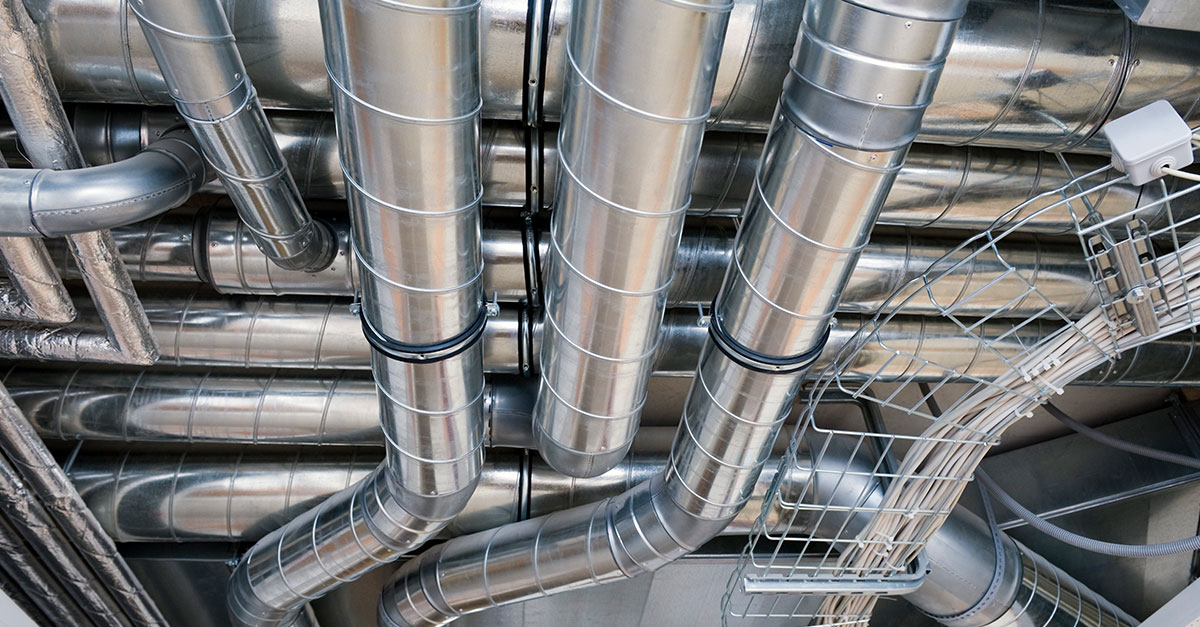It’s more important than ever to make sure that the conditioned air produced by heating and cooling systems is properly retained and utilized. The HVAC system in a home or building can be a major source of energy loss and inefficiency, resulting in increased energy costs and shortened equipment life. Conversely, by increasing the efficiency of the HVAC system, you can increase the overall energy efficiency of the home or building and both reduce energy costs and extend equipment life. So it’s not surprising that the industry is taking a closer look at ways to make the HVAC system more efficient.
In addition to helping cut costs, an efficient HVAC system is also important for occupant well-being. Studies show that indoor air quality plays a role in occupants’ cognitive function and productivity. A one-year study including office workers in six countries showed that increased concentrations of fine particulate matter and lower ventilation rates were associated with slower response times and reduced accuracy on cognitive tests.1
To make sure your HVAC system is operating as efficiently as possible, consider the following four steps.
#1 Meet current code requirements
Make sure your HVAC system is designed to meet the minimum efficiency requirements of the 2021 International Energy Conservation Code (IECC). In the United States, energy codes vary by state. Many states use the IECC as a starting point and then amend it.2
The most recent updates to the IECC and the 2019 American Society of Heating, Refrigerating and Air-Conditioning Engineers (ASHRAE) 90.1 Energy Standard specify R-12 insulation for duct wraps, duct liner, and duct board in certain HVAC applications. These applications include commercial ducts in unconditioned (IECC only) and exterior (IECC & ASHRAE 90.1) spaces in climate zones 5-8.
Code requirements are constantly changing, so expect these minimum efficiency requirements to continue to evolve. For example, the Washington State Energy Code now requires ducts that penetrate the building thermal envelope be insulated with the same R-value insulation as walls, which created a need for R-19 duct insulation. This insulation was not previously available in the market so, in response to this new requirement, Johns Manville launched a first-of-its-kind product, R-19 Microlite® FSK duct wrap.
Additionally, the Oregon Residential Specialty Code published in 2021 also introduced new requirements for the insulation and installation of ducts. All new duct systems in the state must be insulated to a minimum of R-8.
#2 Consider buried ducts
A buried duct system is a method of duct installation that is appropriate when ducts are installed in a vented attic, rather than within the conditioned space of the building. In this case, the ducts are installed on the attic floor and then covered with the same insulation that’s used to insulate the attic.
A buried duct system can be a cost-effective alternative to installing ducts inside the conditioned space. In the past, buried ducts were used only in drier climates. This was because condensation could be problematic in more humid climates. Water vapor would condense on air conditioning ducts, most commonly on ducts in crawl spaces and basements, where the air has a higher dew point. Condensation on ducts could result in wet duct insulation and water stains on the ceiling.
The 2021 International Residential Code (IRC) and International Energy Conservation Code (IECC) include new requirements that are intended to prevent condensation on buried ducts in humid climates, making buried ducts an option in a wider range of climates. These requirements include insulating to at least R-13 in IECC climate zones 1A, 2A, and 3A, and to at least R-8 in all other climate zones. Plus, there must be a total of R-19 of insulation above and below the ducts, excluding the R-value of the duct insulation.
#3 Ensure proper installation
The most well-designed HVAC system will not deliver on its expected efficiency if it’s not properly installed. Properly select insulation type and size to make sure insulation will fit properly and perform as intended. Also, make sure to effectively seal joints, seams, and connections.
When installing, here are a couple of issues to watch out for:
- Poorly sealed vapor retarder jacketing. This will allow vapor ingress. Wet insulation is up to 95% less effective than dry insulation.
- Insufficient insulation thickness. If you don’t have adequate insulation, there’s a risk that condensation will form. Condensation can lead to decreased efficiency, mold or unwanted odor, damage to the system and to the insulation. Check out the latest IRC or IECC guidelines to make sure you’re insulating adequately.
#4 Perform regular maintenance
Finally, it’s important to make sure to maintain the HVAC system properly. Regular maintenance will help ensure that the HVAC system is running efficiently and can help cut energy costs. In general, maintenance should be performed once a year. However, if you notice poor performance, strange noises coming from the HVAC system, or unexpected increases in heating or cooling costs, it may be time for maintenance.
A complete line of HVAC insulation
Johns Manville can help with a complete line of HVAC insulation for both commercial and residential buildings. To learn more, visit here.
_____________________________________________________________
2. https://www.energycodes.gov/status/residential

